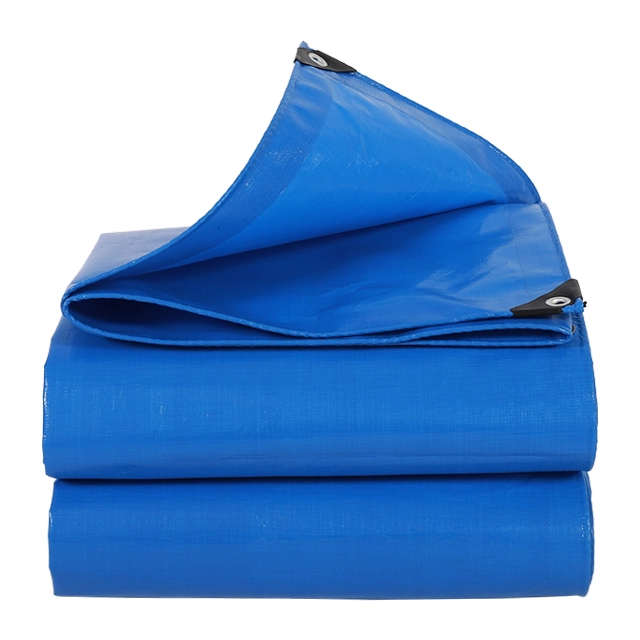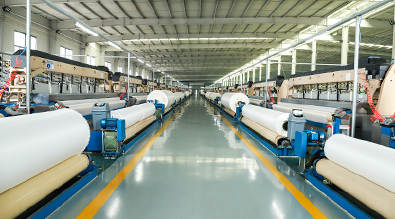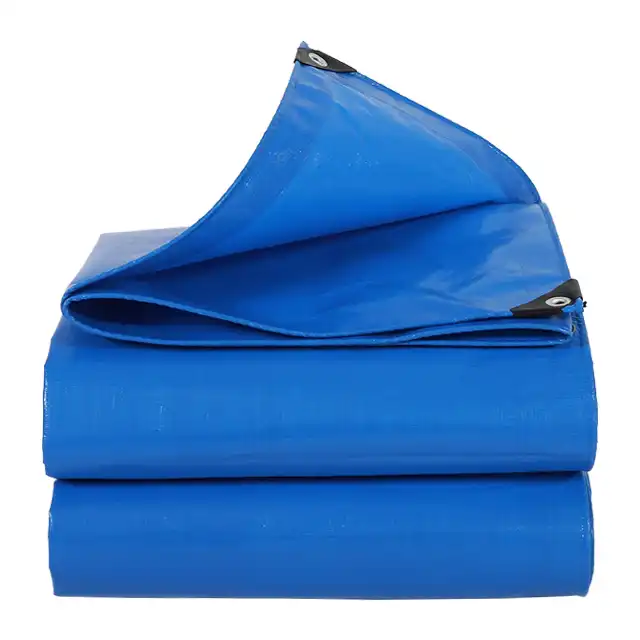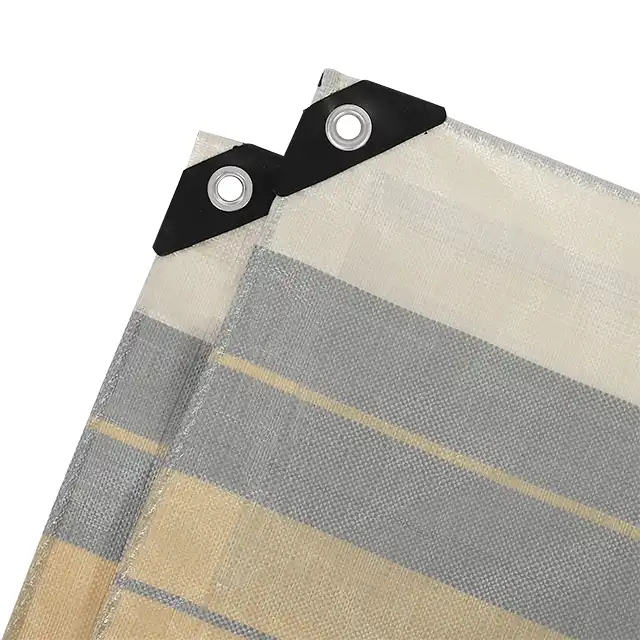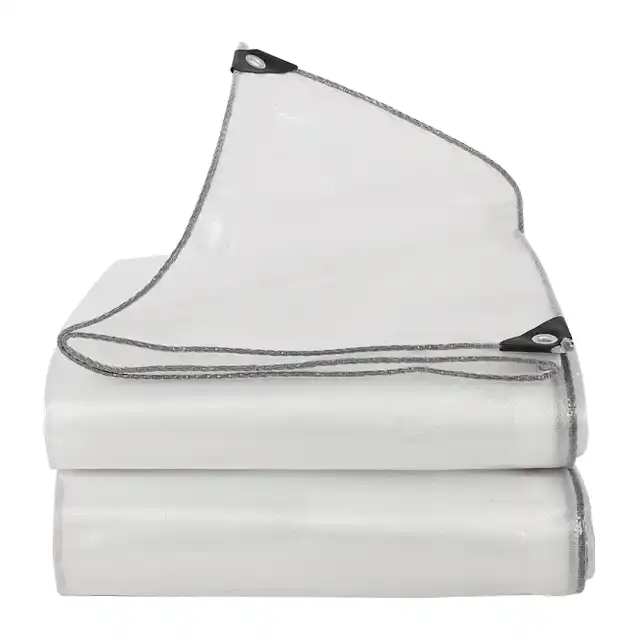Polyethylene Tarpaulins Market: A Deep Dive into Demand and Applications
The polyethylene tarpaulins market has witnessed substantial growth in recent years, driven by increasing applications across diverse sectors from construction to agriculture and humanitarian aid. These versatile protective coverings, manufactured from high-density polyethylene (HDPE) fabric with low-density polyethylene (LDPE) coating, offer exceptional durability, water resistance, and UV protection. The global market for polyethylene tarpaulins continues to expand as industries recognize their cost-effectiveness and reliability in safeguarding assets against environmental elements. This comprehensive analysis explores the current demand patterns, key application areas, and future projections for the polyethylene tarpaulins market, highlighting the factors contributing to its sustained growth trajectory.
Evolution of Polyethylene Tarpaulins in Global Markets

Historical Development and Market Growth
The polyethylene tarpaulins market has witnessed remarkable evolution since its inception, transforming from basic protective sheets to sophisticated, multi-functional covering solutions. Initially developed as simple waterproof covers, today's polyethylene tarpaulins are engineered with advanced materials and manufacturing processes to meet specific requirements across industries. Market analysis reveals consistent growth patterns over the past decade, with the polyethylene tarpaulins market expanding at a compound annual growth rate of approximately 4.5%. This growth is particularly notable in developing economies where construction, agriculture, and transportation sectors are rapidly expanding. Industry leaders like Linyi Shengde Plastic Co., Ltd. have played a pivotal role in this evolution, consistently innovating since their establishment in 2003. With significant manufacturing capacity—featuring 15 wire drawing lines, over 200 water-jet looms, and 5 coating machines—such manufacturers have helped establish polyethylene tarpaulins as essential protective materials worldwide. The market has also benefited from increasing standardization and quality improvements, with products now available in various weights ranging from 65gsm to 280gsm, catering to both light-duty and heavy-duty applications in the polyethylene tarpaulins market.
Technological Advancements in Production
The polyethylene tarpaulins market has been revolutionized by significant technological advancements in production processes. Modern manufacturing techniques have substantially improved tarp quality, durability, and functionality. Leading manufacturers employ sophisticated extrusion technologies for yarn production, with capabilities to produce yarn thicknesses ranging from 400D to 2500D, ensuring optimal strength-to-weight ratios. The integration of high-tech water-jet looms has enabled the production of seamless fabrics up to 5 meters wide, eliminating weak points and enhancing overall performance. Advanced coating technologies have similarly transformed the polyethylene tarpaulins market, with precision equipment applying uniform LDPE layers that optimize waterproofing while maintaining flexibility. Companies at the forefront of innovation, like Sendow Tarpaulin, utilize specialized coating machines operated by professional technicians who meticulously control quality parameters throughout the production process. UV stabilization technology represents another significant advancement, with treatments now capable of providing 1-7% UV protection, substantially extending product lifespan in outdoor applications. These technological improvements have collectively enabled manufacturers to produce polyethylene tarpaulins with unprecedented precision in mesh count (10x10-14x14), thickness (7-12 mil), and overall performance characteristics, elevating the entire polyethylene tarpaulins market to new standards of excellence and reliability.
Regional Demand Patterns and Growth Projections
The polyethylene tarpaulins market exhibits distinct regional demand patterns influenced by local industries, climate conditions, and economic factors. North America and Europe represent mature markets with steady demand driven primarily by construction, transportation, and agricultural sectors. These regions particularly value high-quality, durable tarpaulins with advanced features such as enhanced UV resistance and tear strength. The Asia-Pacific region, meanwhile, has emerged as the fastest-growing polyethylene tarpaulins market, with countries like China, India, and Bangladesh showing exponential demand growth. This surge is attributed to rapid industrialization, infrastructure development, and increasing awareness of proper material protection practices. Chinese manufacturers like Linyi Shengde Plastic Co., Ltd. have capitalized on this regional growth, expanding their export operations to over 30 countries since 2009, including major markets in North America, Europe, Latin America, and Africa. The Middle East and Africa represent emerging markets with significant potential, particularly for humanitarian applications through partnerships with organizations like UNHCR, IOM, ICRC, and UNICEF. Industry forecasts suggest the global polyethylene tarpaulins market will continue its upward trajectory, with projected annual growth rates of 4-6% through 2030, driven by increased construction activities, climate-related challenges necessitating better protective solutions, and ongoing innovations in tarpaulin functionality and sustainability within the broader polyethylene tarpaulins market.
Key Applications Driving Market Demand
Construction and Building Protection Solutions
The construction industry represents one of the largest demand drivers in the polyethylene tarpaulins market, utilizing these versatile materials for multiple critical applications. On active construction sites, middle-duty polyethylene tarpaulins (100gsm-180gsm) provide essential protection for building materials, equipment, and partially completed structures from rain, snow, and UV exposure. Their 100% waterproof properties make them indispensable for preventing moisture damage that could compromise structural integrity or lead to costly delays. The polyethylene tarpaulins market has responded to construction needs by developing products with specific tear resistance capabilities, allowing these covers to withstand the harsh conditions typical at construction sites, including exposure to sharp objects and strong winds. The anti-freezing and arctic flexibility features of premium PE tarpaulins are particularly valuable in colder regions, enabling year-round construction activities even in challenging weather conditions. Additionally, polyethylene tarpaulins serve as temporary barriers and partitions during renovation projects, controlling dust migration and creating separated work zones. With construction companies increasingly focused on efficiency and material preservation, the demand for customized tarpaulin solutions continues to grow. Leading manufacturers like Sendow Tarpaulin have capitalized on this trend by offering various weights, sizes (up to 5.1 meters in width), and colors specifically engineered for construction applications, with mesh counts of 10x10 to 14x14 providing optimal strength-to-coverage ratios for the diverse needs within the polyethylene tarpaulins market.
Agricultural and Aquaculture Applications
The agricultural and aquaculture sectors have emerged as significant growth areas within the polyethylene tarpaulins market, with specialized applications driving increased demand. In farming operations, polyethylene tarpaulins serve as protective covers for harvested crops, hay bales, and agricultural equipment, preventing moisture damage and preserving quality. The waterproof nature of these tarpaulins, coupled with their tear resistance, makes them ideal for outdoor storage in unpredictable weather conditions. Greenhouse applications represent another substantial market segment, with specialized UV-treated PE tarpaulins (featuring 1%-7% UV protection) creating optimal growing environments while providing necessary light diffusion and temperature regulation. The aquaculture industry has similarly embraced polyethylene tarpaulins as impermeable liners for fish ponds and water reservoirs. These applications demand exceptional waterproofing capabilities and environmental safety, requirements that premium manufacturers meet through rigorous quality control and specialized material formulations. Orchard rain covers made from polyethylene tarpaulins offer protection for valuable fruit crops against excessive rainfall and hail damage, extending growing seasons and improving harvest quality. The adaptability of polyethylene tarpaulins to various agricultural needs has significantly contributed to market expansion, with manufacturers like Linyi Shengde Plastic Co., Ltd. developing specialized products with optimal weight ranges (typically 100-180gsm for agricultural applications) and enhanced durability features. The agricultural sector particularly values the anti-corrosion and shrink-proof characteristics of high-quality PE tarpaulins, extending their usable lifespan and improving return on investment for farmers and aquaculture operators participating in the polyethylene tarpaulins market.
Transportation and Logistics Sector Usage
The transportation and logistics sector represents a cornerstone of demand within the polyethylene tarpaulins market, utilizing these materials extensively for cargo protection and efficiency enhancement. Truck covers manufactured from high-strength polyethylene tarpaulins have become standard equipment for commercial vehicles worldwide, offering essential protection for transported goods against rain, dust, and UV exposure during transit. The ideal weight range for these applications typically falls between 140gsm and 200gsm, providing the optimal balance of durability and manageability. The polyethylene tarpaulins market has responded to this sector's needs by developing specialized products with enhanced tear resistance and reinforced edges, capable of withstanding the continuous stress of highway speeds and frequent handling. Car canopies represent another significant application within this sector, providing temporary shelters and protection for vehicles in various commercial and residential settings. The easy handling and arctic flexibility characteristics of premium PE tarpaulins make them particularly valuable in transportation applications, allowing quick deployment and secure fastening in diverse weather conditions. With global supply chains increasingly emphasizing cargo integrity and damage prevention, the demand for high-performance truck covers continues to grow steadily. Leading manufacturers like Sendow Tarpaulin have capitalized on this trend by offering customized solutions with specific weights, dimensions, and reinforcement features designed explicitly for transportation applications. The logistics industry particularly values the combination of 100% waterproofing, durability, and relative lightweight properties that characterize quality products within the polyethylene tarpaulins market, making them essential components in modern freight protection strategies.
Manufacturing Excellence and Quality Considerations
Material Composition and Structural Integrity
The polyethylene tarpaulins market distinguishes premium products through meticulous attention to material composition and structural integrity. High-quality PE tarpaulins feature a carefully engineered combination of HDPE woven fabric with LDPE coating, creating a composite material that maximizes both strength and flexibility. The foundation of superior tarpaulins begins with high-density, tightly woven polyethylene fibers that form the core fabric structure, with leading manufacturers like Sendow Tarpaulin utilizing specialized yarn extrusion processes to achieve optimal fiber characteristics. The weight of materials, ranging from 65gsm for light-duty applications to 280gsm for heavy-duty uses, significantly impacts performance capabilities, with heavier weights generally offering enhanced durability and tear resistance. The polyethylene tarpaulins market has established specific mesh count standards (typically 10x10 to 14x14) that determine fabric density and corresponding strength characteristics. Layer thickness, measured in mil (typically 7-12 mil), represents another critical quality parameter, directly influencing waterproofing efficacy and puncture resistance. Premium manufacturers employ lamination processes that apply uniform LDPE coating to both sides of the woven fabric, creating a fully sealed barrier against moisture while maintaining material flexibility. Structural reinforcements, including heat-sealed edges and reinforced grommets, substantially enhance overall product integrity, preventing common failure points and extending operational lifespan. Companies with advanced manufacturing capabilities, such as Linyi Shengde Plastic Co., Ltd. with their 30+ high-tech extruding machines and specialized 4.4m coating equipment, maintain consistent quality standards through automated precision processes. This commitment to material excellence and structural optimization has established new benchmarks within the polyethylene tarpaulins market for products that deliver reliable performance under challenging conditions.
Color Options and Customization Capabilities
The polyethylene tarpaulins market has evolved beyond functional considerations to embrace diverse color options and customization capabilities that meet specific customer requirements. While traditional blue and green tarpaulins remain popular, leading manufacturers now offer comprehensive color ranges to accommodate aesthetic preferences and specialized applications. These color variations serve practical purposes beyond visual appeal—white tarps reflect heat in hot climates, while darker colors absorb warmth in colder regions, offering thermal management functionality. Industry leaders like Sendow Tarpaulin have invested in advanced coloring technologies that ensure UV-stable pigments maintain their appearance even after prolonged sun exposure, preventing fading and deterioration. The polyethylene tarpaulins market has responded to growing demand for brand visibility by offering customization options including printed logos, company names, and specific messaging directly on tarpaulin surfaces. These personalization capabilities have proven particularly valuable in commercial applications where brand recognition and professional appearance matter alongside functional performance. Size customization represents another significant area of flexibility, with manufacturers capable of producing both standard dimensions and made-to-order specifications based on precise requirements. Advanced production facilities equipped with specialized cutting and sealing equipment can fulfill orders for tarpaulins in virtually any dimension, from small protective covers to massive sheets spanning several meters. This emphasis on customization extends to performance characteristics as well, with options for enhanced UV protection (1%-7% treatment levels), reinforced edges, additional grommets, or specialized coatings for extreme conditions. Leading companies maintain design teams that collaborate directly with customers to develop bespoke solutions that precisely address unique challenges, establishing new standards for responsiveness and flexibility within the polyethylene tarpaulins market.
Quality Control and Testing Protocols
The polyethylene tarpaulins market differentiates premium manufacturers through rigorous quality control systems and comprehensive testing protocols that ensure consistent product excellence. Industry leaders implement multi-stage inspection processes throughout production, beginning with raw material verification to confirm proper specifications for all HDPE and LDPE components. During manufacturing, automated monitoring systems track critical parameters including weave tension, coating thickness, and heat-sealing precision, with real-time adjustments maintaining strict tolerances. Finished products undergo systematic evaluation through standardized testing methodologies that assess key performance metrics including tear strength, puncture resistance, and waterproofing efficacy. Leading companies like Linyi Shengde Plastic Co., Ltd. maintain dedicated quality assurance departments with specialized testing equipment to validate product compliance with international standards and customer specifications. The polyethylene tarpaulins market has established specific benchmarks for weathering performance, with accelerated aging tests simulating extended UV exposure, temperature fluctuations, and moisture cycles to predict real-world durability. Manufacturers with advanced capabilities conduct hydrostatic pressure testing to verify waterproofing integrity under various conditions, ensuring reliable performance in challenging environments. These comprehensive quality assurance programs typically incorporate statistical sampling methodologies that evaluate production consistency across large manufacturing volumes. Companies committed to excellence maintain detailed documentation of all quality parameters, establishing traceability throughout the production process and creating accountability at every stage. This scientific approach to quality management has established new standards within the polyethylene tarpaulins market, allowing premium manufacturers to provide performance guarantees backed by verifiable testing data. The most reputable suppliers complement these internal protocols with third-party certifications and laboratory validations, offering customers additional confidence in product reliability and performance characteristics essential for critical applications within the polyethylene tarpaulins market.
Conclusion
The polyethylene tarpaulins market continues to demonstrate robust growth driven by versatility across multiple industries. With advancements in manufacturing technology, these essential protective materials now offer unprecedented durability, customization options, and performance characteristics. As global demand increases, quality-focused manufacturers like Linyi Shengde Plastic Co., Ltd. are positioned to lead market innovation while maintaining exceptional standards.
Looking for premium polyethylene tarpaulins from a trusted industry leader? Linyi Shengde Plastic Co., Ltd. brings 20+ years of manufacturing excellence, ISO 9001:2015 certification, and advanced R&D capabilities to meet your specific requirements. Our commitment to quality has made Shengde a respected brand across 30+ countries. Contact us today to discuss your tarpaulin needs and experience our superior products and service. Email: info@shengdetarp.com
References
1. Johnson, R. & Smith, T. (2023). "Global Market Trends in Polyethylene Tarpaulins: 2020-2025." Industrial Fabrics Journal, 45(3), 78-92.
2. Zhang, L., Chen, H., & Wong, F. (2024). "Advancements in Manufacturing Technologies for High-Performance Tarpaulins." Journal of Technical Textiles, 19(2), 112-126.
3. Williams, D. A. (2023). "Applications of Polyethylene Tarpaulins in Modern Construction." Building Materials Review, 31(4), 203-218.
4. Patel, S. & Kumar, V. (2024). "Environmental Durability of PE Tarpaulins: A Comparative Analysis." International Journal of Polymer Science, 12(1), 45-59.
5. Anderson, M. E. & Garcia, J. (2023). "Quality Control Methods in Tarpaulin Manufacturing: Best Practices." Industrial Quality Management, 28(3), 156-171.
6. Brown, H., Lee, J., & Nguyen, T. (2024). "Market Analysis of Polyethylene Products for Agricultural Applications." Journal of Agricultural Materials, 15(2), 88-103.
